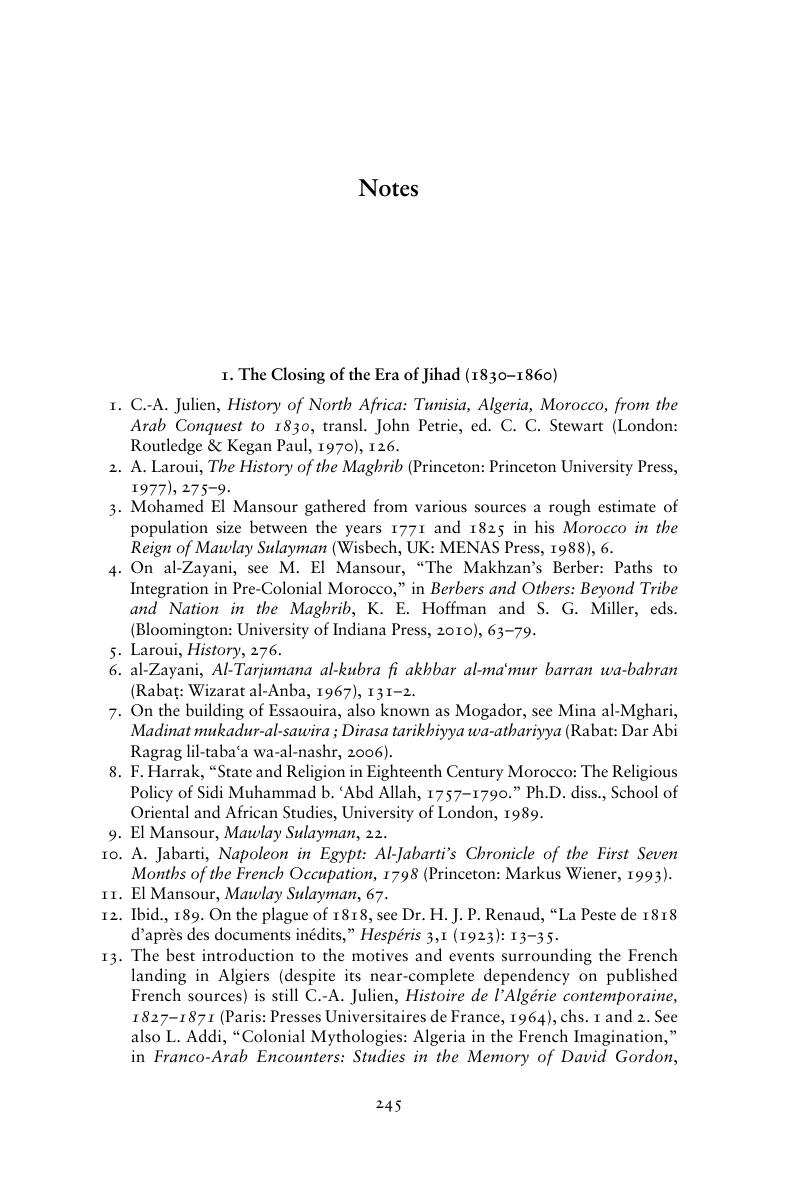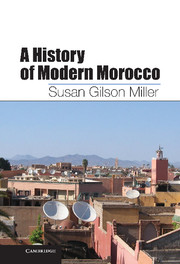Book contents
- Frontmatter
- Contents
- List of Maps and Illustrations
- Acknowledgments
- Note on Transliteration and Translation
- Chronology
- Who Is Who?
- Introduction
- 1 The Closing of the Era of Jihad (1830–1860)
- 2 Facing the Challenges of Reform (1860–1894)
- 3 The Passing of the Old Makhzan (1894–1912)
- 4 France and Spain in Morocco
- 5 Framing the Nation (1930–1961)
- 6 The First Age of Hassan II
- 7 The Second Age of Hassan II
- 8 Summation
- 9 Postscript
- Key Abbreviations
- Glossary
- French Rsidents-Généraux in Morocco, 1912–1956
- Sultans and Kings of the ʿAlawite Dynasty, 1664–2012
- Notes
- Bibliography of Works Cited
- Index
- References
Notes
Published online by Cambridge University Press: 05 February 2013
- Frontmatter
- Contents
- List of Maps and Illustrations
- Acknowledgments
- Note on Transliteration and Translation
- Chronology
- Who Is Who?
- Introduction
- 1 The Closing of the Era of Jihad (1830–1860)
- 2 Facing the Challenges of Reform (1860–1894)
- 3 The Passing of the Old Makhzan (1894–1912)
- 4 France and Spain in Morocco
- 5 Framing the Nation (1930–1961)
- 6 The First Age of Hassan II
- 7 The Second Age of Hassan II
- 8 Summation
- 9 Postscript
- Key Abbreviations
- Glossary
- French Rsidents-Généraux in Morocco, 1912–1956
- Sultans and Kings of the ʿAlawite Dynasty, 1664–2012
- Notes
- Bibliography of Works Cited
- Index
- References
Summary

Information
- Type
- Chapter
- Information
- A History of Modern Morocco , pp. 245 - 274Publisher: Cambridge University PressPrint publication year: 2013
